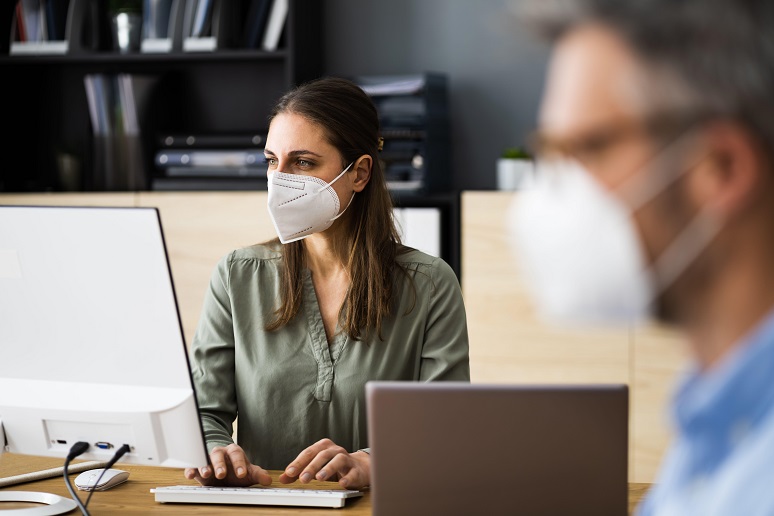As the dog days off summer officially wind down, many people are eagerly awaiting the fall season, with its crisper and cooler air and pumpkin-flavored everything. But for workplace leaders, the fall brings uncertainty and the potential that the trajectory of hybrid work might once again be interrupted by infectious diseases.
In the last two years, we’ve seen COVID cases spike in the fall/winter timeframe, which reduced in-person working and increased work from home. The Biden Administration is even predicting that 100 million Americans, or 30% of the U.S. population, will be infected with COVID by the end of 2022,
as the New York Times reported. Given the disease’s seasonality, many people are already preparing for what might come next;
updated COVID vaccines should offer better protection from the Omicron variants, and workplaces can do their part in stopping the spread of COVID by reintroducing stricter mitigation efforts (mask-wearing, social distancing, etc.) when COVID cases rise in the area.
Is It Time to Address Monkeypox in the Workplace?
While COVID was the infectious disease that hamstrung in-person working for nearly two years, the monkeypox outbreak is causing fresh anxiety. Last week, the White House declared monkeypox a public health emergency, and governors in California, Illinois, and New York also declared a state of emergency for their states,
as NPR reported.
Though cases of monkeypox have risen in the U.S., we might not see the same impact with this disease as we did COVID. The monkeypox virus is less contagious than COVID, and the virus “mutates slower than coronaviruses,” according to the
California Department of Public Health. From a pure workplace perspective, the U.S. Centers for Disease Control and Prevention (CDC) and Occupational Safety and Health Administration (OSHA) have not declared monkeypox an occupational hazard, as
Fortune reported.
Additionally, some of the work HR did to retool policies for COVID can come in handy with monkeypox, as
SHRM shared in a recent article. Many workplaces have created or revised HR policies that cover all communicable diseases, and many are relying on CDC guidance, OSHA recommendations, state regulations, and other guidelines to make workplace decisions, Michelle Griffin, CEO of Griffin Resources, shared in the SHRM article. Griffin added:
"They have not needed to adjust any policies in writing specifically for monkeypox because of the more general policies. With that said, we haven't seen any companies specifically make an accommodation or rules around monkeypox at all at this time."
Hope for the Best, Prepare for the Worst
So, the impact of COVID, monkeypox, or even the flu on how and where we work this fall is — for now — a bit unclear. It’s true that in terms of containing the spread of infectious diseases,
working from home can help a great deal. However, I’m not sure that we will see the same quick action to shutter offices this fall, as we did the previous two.
For one, overall attitudes towards COVID have changed from just a year ago. In a survey of 1,092 adults in the U.S., market research and consulting firm
Ipsos found that 42% of Americans have already returned to their normal/pre-COVID life, in comparison to 28% from the year before. When asked about how concerned they were about COVID or an outbreak, 14% said "not at all," 25% said "not very," and 34% said "somewhat," compared to 15% that said "very" and 10% that said "extremely." Obviously, we shouldn’t misconstrue a decline in caring about COVID with the disease not being a health concern, but it gives a bit of context for where people are at now.
And credit where credit is due. Many workplace leaders have made a host of changes, from
improving air filtration, enabling work from anywhere with
communications and collaboration technology, and creating HR policies – all of which provide greater workplace flexibility and safety. That said, I wouldn’t be surprised if, in the hurry to enable the hybrid office, some workplace leaders have let down the guard a bit, which can create some missteps in responding to whatever happens this fall and winter.
I can see both sides of the argument. On one hand, workplaces might err on the side of caution and go the remote-work route, while others might see updated COVID vaccines, monkeypox not being as big of a threat to their employees, and the fact that many people have “moved on from the pandemic” as a sign to proceed on their current course, albeit with some added caution. Regardless of how the fall pans out, I think it’s safe to say some level of uncertainty will continue – the question now is just how much.




